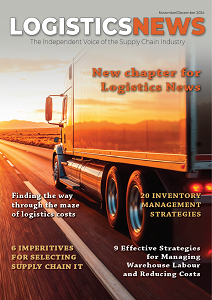E-commerce fulfilment warehouses are finding their niche as a quick response for the gig economy market.
The gig economy, or the side hustle, is growing at a fast pace globally, with people demanding more flexible hours and additional sources of income outside their full-time jobs. One of the most popular ways to earn extra cash is by selling products on e-commerce marketplaces such as Takealot, or from their garages.
According to Hyperwallet’s 2017 study The State of E-Commerce Marketplace Selling in 2017, more than nine in 10 marketplace sellers bring in up to 49 percent of their total income selling on e-commerce sites. And, one in 10 sellers are focused on making enough money through online selling to quit their full-time job.
Experts in the field say that the global COVID-19 pandemic accelerated the shift to digital shipping by roughly five years. With the e-commerce sector booming, so too is the number of small online businesses with garages and living rooms packed to the ceiling with inventory. Warehousing is a critical component to the e-merchant’s business, but too often the focus for these start-up businesses is on marketing their products and building a customer base rather than planning for warehousing and storage. These SMEs often grow to become too big for their garage, but too small for a warehouse. In addition, while there has been a rapid increase in e-commerce business, the amount of warehousing space has not grown enough to accommodate this increase, putting space at a premium.
Meanwhile, thanks to the Amazon Prime Effect, online shoppers have come to expect same-day or two-day delivery, for almost nothing, putting e-commerce merchants under pressure to get faster. The traditional distribution centre network just isn’t agile enough to keep up with fast-paced consumer demands. This is where fulfilment warehouses and third- and fourth-party logistics (3PL and 4PL) providers come in.
What is a fulfilment warehouse?
For small businesses, warehouses can be overwhelming in terms of cost and management. Leasing space in a warehouse can also be costly, and if the business sells a wide
variety of products, they need more space, requiring more money. Here, 3PLs and fulfilment warehouses can play a huge role in the burgeoning gig economy.
While inventory is stored at both fulfilment centres and warehouses, the difference is long-term versus shortterm storage. A warehouse usually stores products longterm – receiving and storing inventory but not doing the picking, packing and shipping. A fulfilment centre stores the inventory, but it is focused on getting the products into the hands of customers – ideally, products move in and out of this centre quite quickly. Fulfilment warehouses offer a hybrid approach, providing short-, medium- and longterm storage, warehouse management, order fulfilment and arranging last-mile delivery of the product to the customer. The fulfilment warehouse is also able to deliver product to a large e-commerce marketplaces, like Takelot.
Using a fulfillment warehouse gives smaller businesses the opportunity to scale their business operations without investing in overhead like warehouse space and employees.
While a warehouse tends to be inactive because it’s used mostly for storing inventory, an order fulfillment centre and warehouse is a hive of activity, picking and packing boxes, preparing shipping labels, shipping orders and managing returns. 4PLs go a step further by overseeing and organising the entirety of a supply chain, not just the logistics, becoming a true partner with the customer, working to create a smooth, cost-effective supply chain. The 4PL provider is a big umbrella, under which is transportation, warehouses and sometimes even website construction and design and the facilitation of compliance with large e-commerce marketplaces.
The terms ‘warehouse’, ‘fulfillment centre’ and ‘fulfillment warehouse’ are often used interchangeably, but using a simple warehouse space is very different from being able to benefit from the range of services a fulfillment centre or warehouse offers. What works best for any individual seller comes down to the type of service they need.

.jpg)

